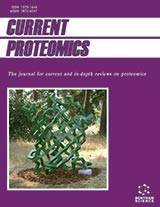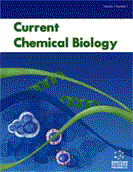Abstract
Biomolecular computation and synthetic biology are the main disciplines in the design and implementation of biological computing devices. This article examines some of the key works concerning this type of logical devices processing biological information. Their design and construction follow two main approaches. The first approach builds computing devices based on the properties of nucleic acids, whereas the second approach focuses on genetic regulatory networks. Examples of the nucleic acid based approach are DNA self-assembly, DNA automata based on restriction enzymes or deoxyribozymes and logic circuits based on DNA strand displacement. Examples of the use of genetic networks are NOT, AND and OR logic gates, a genetic toggle switch that works like a biological memory unit, and several genetic oscillators that work as biological clocks.
Keywords: DNA computing, biomolecular computation, synthetic biology, genetic circuit, strand displacement, molecular automata, nucleic acids, enzymes, DNA molecules, Genetic Oscillators
Current Bioinformatics
Title: Biomolecular Computers
Volume: 6 Issue: 2
Author(s): Inaki Sainz de Murieta, Jesus M. Miro-Bueno and Alfonso Rodriguez-Paton
Affiliation:
Keywords: DNA computing, biomolecular computation, synthetic biology, genetic circuit, strand displacement, molecular automata, nucleic acids, enzymes, DNA molecules, Genetic Oscillators
Abstract: Biomolecular computation and synthetic biology are the main disciplines in the design and implementation of biological computing devices. This article examines some of the key works concerning this type of logical devices processing biological information. Their design and construction follow two main approaches. The first approach builds computing devices based on the properties of nucleic acids, whereas the second approach focuses on genetic regulatory networks. Examples of the nucleic acid based approach are DNA self-assembly, DNA automata based on restriction enzymes or deoxyribozymes and logic circuits based on DNA strand displacement. Examples of the use of genetic networks are NOT, AND and OR logic gates, a genetic toggle switch that works like a biological memory unit, and several genetic oscillators that work as biological clocks.
Export Options
About this article
Cite this article as:
Sainz de Murieta Inaki, M. Miro-Bueno Jesus and Rodriguez-Paton Alfonso, Biomolecular Computers, Current Bioinformatics 2011; 6 (2) . https://dx.doi.org/10.2174/1574893611106020173
| DOI https://dx.doi.org/10.2174/1574893611106020173 |
Print ISSN 1574-8936 |
| Publisher Name Bentham Science Publisher |
Online ISSN 2212-392X |
 8
8
- Author Guidelines
- Bentham Author Support Services (BASS)
- Graphical Abstracts
- Fabricating and Stating False Information
- Research Misconduct
- Post Publication Discussions and Corrections
- Publishing Ethics and Rectitude
- Increase Visibility of Your Article
- Archiving Policies
- Peer Review Workflow
- Order Your Article Before Print
- Promote Your Article
- Manuscript Transfer Facility
- Editorial Policies
- Allegations from Whistleblowers
Related Articles
-
The Endocrine System and Sarcopenia: Potential Therapeutic Benefits
Current Aging Science Muscle Atrophy Classification: The Need for a Pathway-Driven Approach
Current Pharmaceutical Design Innate Immunity in the Mucosal Immune System
Current Pharmaceutical Design Metformin - The Drug for the Treatment of Autoimmune Diseases; A New Use of a Known Anti-Diabetic Drug
Current Topics in Medicinal Chemistry The Rapidly Changing Composition of the Global Street Drug Supply and its Effects on High-risk Groups for COVID-19
Current Psychopharmacology Vitamin D Therapy in Cardiac Hypertrophy and Heart Failure
Current Pharmaceutical Design In-silico Evidences of Regulatory Roles of WT1 Transcription Factor Binding Sites on the Intervening Sequences of the Human Bcl-2 Gene
Current Bioinformatics Interferons: Mechanisms, Biological Activities and Survey of their Use in Human Diseases
Current Bioactive Compounds Development of a Registry for Down Syndrome in the Gulf Area of the Middle East
Applied Clinical Research, Clinical Trials and Regulatory Affairs Drug-Induced Thromboembolic Events in Patients with Malignancy
Cardiovascular & Hematological Disorders-Drug Targets The Intermediate Enzymes of Isoprenoid Metabolism as Anticancer Targets
Anti-Cancer Agents in Medicinal Chemistry Activation of CAR and PXR by Dietary, Environmental and Occupational Chemicals Alters Drug Metabolism, Intermediary Metabolism, and Cell Proliferation
Current Pharmacogenomics and Personalized Medicine Opinion Paper: Promise and Pragmatism in Clinical Microbiome Research
Mini-Reviews in Medicinal Chemistry Hypersensitivity Reactions to Quinolones
Current Pharmaceutical Design Biological Effects of Curcumin and Its Role in Cancer Chemoprevention and Therapy
Anti-Cancer Agents in Medicinal Chemistry Intracellular Proton Pumps as Targets in Chemotherapy: V-ATPases and Cancer
Current Pharmaceutical Design Selenium and Selenoproteins: An Overview on Different Biological Systems
Current Protein & Peptide Science The Interaction Between FAK, MYCN, p53 and Mdm2 in Neuroblastoma
Anti-Cancer Agents in Medicinal Chemistry Probiotics in Curing Allergic and Inflammatory Conditions - Research Progress and Futuristic Vision
Recent Patents on Inflammation & Allergy Drug Discovery The Update of NGAL in Acute Kidney Injury
Current Protein & Peptide Science

















.jpeg)








